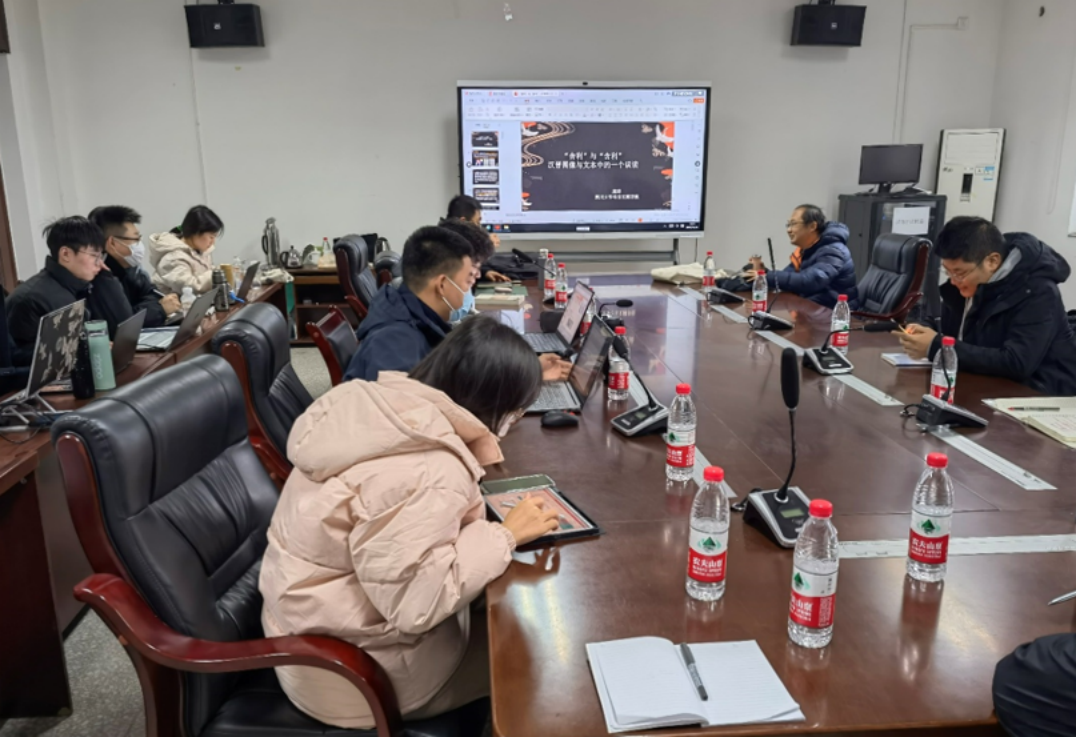"Śarīra" and "Hanli": A Misreading in Han and Jin Dynasty Images and Texts & Lecture Newsletter
Archaeological Science Forum (No. 9)
Pang Zheng is currently an associate researcher and master's supervisor at the School of Archaeology and Museology, Sichuan University. His main research directions are Han and Tang archaeology, art archaeology, and religious archaeology. He has successively carried out field archaeological surveys and excavations in Sichuan, Tibet, Qinghai and other places, and is responsible for teaching courses such as "Chinese Archaeology-3", "Introduction to Art Archaeology", "Archaeology and the History of Civilization", and "Field Archaeology (Survey) Internship". At present, he has published more than 10 papers in academic journals such as "Archaeology", "Acta Archaeologica Sinica", "Archaeology and Cultural Relics", and "Jianghan Archaeology", published an academic monograph, and presided over a number of national and provincial-level scientific research projects.
Time: December 22, 2023, 15:00-17:00
Location: Conference Room 517, Block 2, Liberal Arts Building, Jiang'an Campus, Sichuan University
Lecture Information
On December 22, 2023, the ninth "Archaeological Science Forum" hosted by the Center for Archaeological Science, Sichuan University was held in Conference Room 518, Block 2, Liberal Arts Building, Jiang'an Campus, Sichuan University. Associate Researcher Pang Zheng gave a lecture entitled "'Sarira' and 'Hanli': A Misinterpretation in Han and Jin Images and Texts", which was presided over by Professor Wang Yu of the School of Archaeology and Museology, Sichuan University.

The speaker first started with the origin of the "Sarira" image in the Han and Jin Dynasties. The Sarira image was confirmed with the archaeological discovery of the inscription "Sarira" or "Suanly". It first appeared in the murals of the Helingeer Tomb in Inner Mongolia. Unfortunately, the "Suanly" inscription and its image were damaged shortly after their discovery and have not appeared in any publications, only in the memoirs of the excavators. Li Zuozhi said in "The First Survey Record of the Han Dynasty Mural Tomb in Helingeer", "A plate-shaped object containing four round objects is painted slightly below the north side of the 'Eastern Prince'. The word 'Suanly' is inscribed in the upper left corner." Mr. Yu Weichao studied it in parallel with the "Immortal Riding White Elephant" found in the same tomb, and believed that this was an important Buddhist image during the Huanling period of the Eastern Han Dynasty, and was later extended to be evidence that Buddhism was first introduced into China.
In recent years, with the excavation of more and more Han Dynasty mythical beast images and text inscriptions, the speaker has sorted out the materials about the "Hanli" (formerly known as "Sarira") mythical beast in Han Dynasty images. Its image is mainly a long-snout mythical beast with two horns and wings, often holding a bi, money or spitting out bead-like objects. The popular era was mainly in the middle and late Eastern Han Dynasty, and it continued in the Dunhuang area during the Wei and Jin Dynasties. Then, based on the mythical beast image and inscription in "Stone Carving 1" unearthed from Xigaoxue M2 in Anyang, and combined with relevant historical documents and unearthed text materials, it is believed that the name of this type of mythical beast should be "Hanli". Interpreting "Hanli" as "Sarira" has long been an important misinterpretation in relevant archaeological images and texts about the early transmission of Buddhism in China.
Sarira generally refers to Buddhist relics, and Sarira worship is an important part of Buddhist belief and has special religious meaning. The "Hanli" beast has nothing to do with the Buddhist "Sarira", but is related to the Han Dynasty "Fish and Dragon Acrobatics" and is one of the important roles in it. People at that time believed that "Hanli" was a benevolent and righteous beast that could "spit gold", and that both "Acrobats" and "Hanli" came from the West. The introduction of "Acrobats" and "Hanli" into China made the Han Dynasty acrobatics more prosperous, including the illusionary performances of "Fish and Dragon Acrobatics", which were inseparable from the Western "Acrobats" and "Hanli" mythical beasts. After the Han Dynasty opened up to the Western Regions, the Western acrobats and illusionary performances were linked to the immortal beliefs represented by the Queen Mother of the West, and the images of mythical beasts such as "Hanli" were carved in the tomb to express the tomb owner's desire to ascend to immortality. It is a product formed after the reconstruction of traditional Chinese culture and foreign cultural elements in the Han and Jin Dynasties, but it has nothing to do with Buddhist beliefs and is not a symbol of Buddhist relics "Sarira".
Professor Wang Yu of the School of Archaeology and Museology, Sichuan University, made a comprehensive comment. He pointed out that this research starts from the subtleties, deeply analyzes the origin and meaning of the "Hanli" image, and demonstrates the reasons for the misinterpretation from multiple perspectives. The logic is convincing and has extremely high academic significance. Finally, the participating teachers and students had an in-depth discussion on the spread of Buddhism in the Han and Jin Dynasties and other issues.
